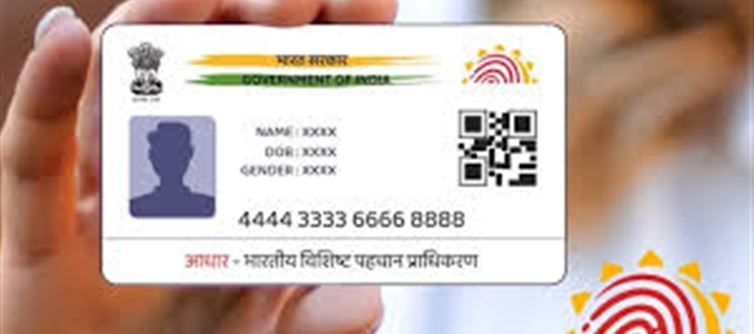
Aadhaar, the unique identification number issued by the Unique Identification Authority of india (UIDAI), is central to numerous services in India. Whether it's opening a bank account, availing government services, or accessing welfare schemes, your Aadhaar card is often required. However, with the latest revision in Aadhaar service fees, it’s important to be aware of the updated charges for various services.
Here’s a detailed breakdown of the revised charges and how they impact you:
1. Increased Charges for Aadhaar Updates
Previously, updating or making changes to your Aadhaar card—such as updating your address, name, or photo—was a relatively low-cost affair. However, the recent changes have introduced higher service charges.
New Charges for Updates:
· Aadhaar Name Update: The fee for updating personal details such as your name or photo has been increased.
· Address Update: Similarly, if you need to update your address, the new charge is now ₹100 instead of the previous ₹50.
· Mobile Number or Email Update: Changing your mobile number or linking a new email address to your Aadhaar can now incur a ₹50 fee.
These updates are important to note, as many citizens frequently make corrections or updates to their Aadhaar details, especially if there are discrepancies.
Why the Change?
The increase in fees is likely due to the growing cost of infrastructure, security, and administrative overheads required to maintain the Aadhaar system. However, the fee hike may also be part of the government's broader initiative to streamline services and encourage wallet PLATFORM' target='_blank' title='digital-Latest Updates, Photos, Videos are a click away, CLICK NOW'>digital updates.
2. Free Updates for Children (Up to 5 Years)
In a positive shift, the government has introduced free updates for children under the age of 5 years. This means that parents or guardians can update the Aadhaar details of their children, including changes in biometric data (like fingerprints or iris scans), without incurring any additional charges.
What Does This Mean for Parents?
· No Charges for biometric Updates: Children’s biometric details, such as fingerprints and iris scans, are updated after they turn 5 years old. parents can now get these updates done for free.
· Child’s Aadhaar Is Not Affected by the Fee Hike: Despite the increase in fees for adults, there is no charge for updates related to children, ensuring that young citizens are not financially burdened.
3. Fees for Aadhaar Reprint and PVC Cards
Besides updates, there are fees for obtaining a reprint of your Aadhaar card or receiving a PVC (Polyvinyl Chloride) Aadhaar card. The charge for reprinting your Aadhaar has been set at ₹50.
The PVC Aadhaar card, which is more durable and secure, can be ordered online for ₹50 as well. This service ensures you receive a more compact and durable version of your Aadhaar, similar to a credit card in size.
4. No Change in Charges for Aadhaar Enrollment
While there have been changes in the fees for updates and reprints, there are no new charges for the initial Aadhaar enrollment. The cost of applying for a new Aadhaar card remains the same.
This is particularly important for those who do not yet have an Aadhaar and are enrolling for the first time. The process remains free of charge for enrollment.
5. Free services for Low-Income Groups
As per UIDAI's statement, certain services for low-income groups and marginalized sections of society may be available for free or at a subsidized rate. This includes people living in remote or rural areas, where accessibility might be a concern.
How Does This Help?
· Financial Relief: Those who are economically disadvantaged will continue to have access to essential Aadhaar services without the added burden of fees.
· Increased Inclusivity: It ensures that Aadhaar remains a service accessible to all sections of society, including those with financial constraints.
6. Importance of Timely Aadhaar Updates
While the new fees may seem like an inconvenience, timely updates of your Aadhaar details are crucial. Here’s why:
· Avoid Mistakes: An up-to-date Aadhaar ensures that your details are correct across all government databases and services.
· Smooth Access to Services: Many government welfare schemes, tax filings, and other services require your Aadhaar to be linked and updated. Not having the correct details may delay or prevent access to these services.
Conclusion: What Do These Changes Mean for You?
While the higher fees for Aadhaar updates might make you think twice before making corrections, the free updates for children are a welcome relief. The changes underscore the need for up-to-date and accurate Aadhaar information to ensure seamless access to government services.
Here’s what you need to do:
· Check your Aadhaar details regularly to ensure they are accurate.
· Update your Aadhaar if any changes are required, keeping in mind the new fees.
· For children, take advantage of the free updates to ensure their Aadhaar remains valid.
Despite the fee hike, Aadhaar continues to be a crucial document, and these changes reflect efforts to maintain the system’s integrity and efficiency.
Disclaimer:
The views and opinions expressed in this article are those of the author and do not necessarily reflect the official policy or position of any agency, organization, employer, or company. All information provided is for general informational purposes only. While every effort has been made to ensure accuracy, we make no representations or warranties of any kind, express or implied, about the completeness, reliability, or suitability of the information contained herein. Readers are advised to verify facts and seek professional advice where necessary. Any reliance placed on such information is strictly at the reader’s own risk..jpg)




 click and follow Indiaherald WhatsApp channel
click and follow Indiaherald WhatsApp channel